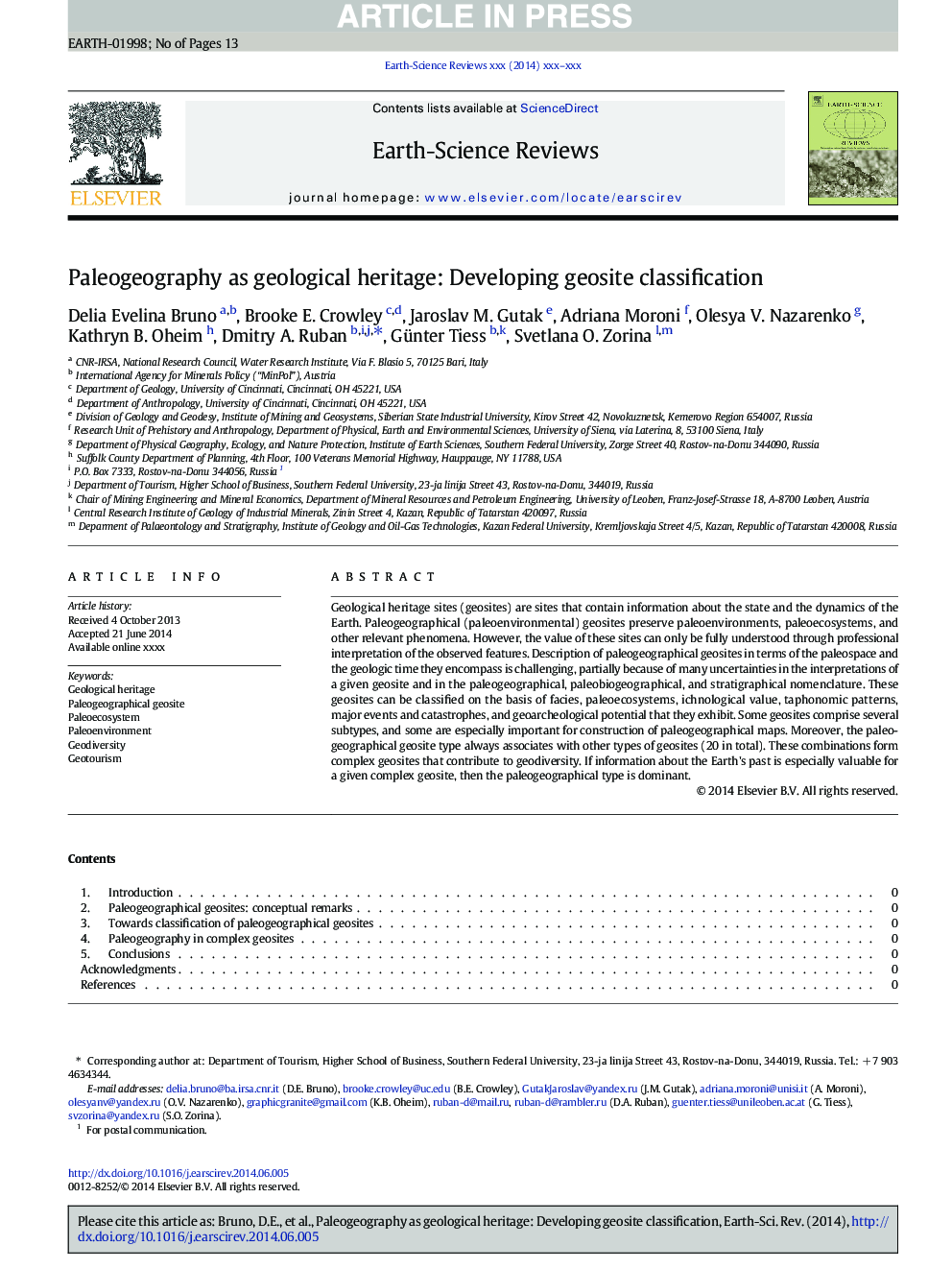| Article ID | Journal | Published Year | Pages | File Type |
|---|---|---|---|---|
| 6443054 | Earth-Science Reviews | 2014 | 13 Pages |
Abstract
Geological heritage sites (geosites) are sites that contain information about the state and the dynamics of the Earth. Paleogeographical (paleoenvironmental) geosites preserve paleoenvironments, paleoecosystems, and other relevant phenomena. However, the value of these sites can only be fully understood through professional interpretation of the observed features. Description of paleogeographical geosites in terms of the paleospace and the geologic time they encompass is challenging, partially because of many uncertainties in the interpretations of a given geosite and in the paleogeographical, paleobiogeographical, and stratigraphical nomenclature. These geosites can be classified on the basis of facies, paleoecosystems, ichnological value, taphonomic patterns, major events and catastrophes, and geoarcheological potential that they exhibit. Some geosites comprise several subtypes, and some are especially important for construction of paleogeographical maps. Moreover, the paleogeographical geosite type always associates with other types of geosites (20 in total). These combinations form complex geosites that contribute to geodiversity. If information about the Earth's past is especially valuable for a given complex geosite, then the paleogeographical type is dominant.
Related Topics
Physical Sciences and Engineering
Earth and Planetary Sciences
Geology
Authors
Delia Evelina Bruno, Brooke E. Crowley, Jaroslav M. Gutak, Adriana Moroni, Olesya V. Nazarenko, Kathryn B. Oheim, Dmitry A. Ruban, Günter Tiess, Svetlana O. Zorina,
